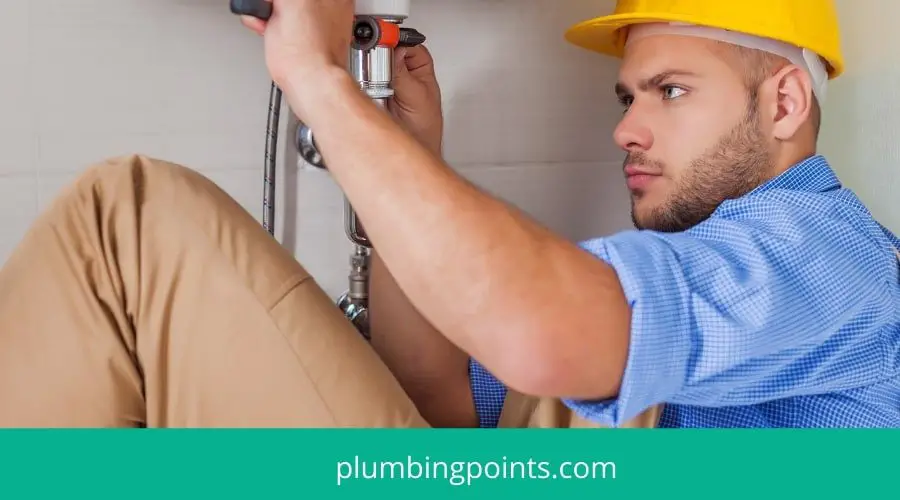Last Updated on August 27, 2022 by admin
Planning to install a sump pump but don’t know what a sump pump weep hole is? And also thinking where to install it?
The other name of a weep hole is “relief hole.” The benefit of a weep hole in a sump pump is significant. Air locked sump pump means your basement can be flooded and thus you may require costly repairs.
This article will assist you by sharing guidelines on the weep hole installation process as well as a detailed discussion about it.
Make sure you read the article intently to get the best result from your sump pump.
So, let’s begin the show.

Table Of Contents
Sump Pump Weep Hole Installation Guide
Installing a weep hole in your sump pump is not a complicated task at all. You can call a professional so that the job gets done efficiently. Don’t forget to read the article of Zoeller M267 Sump Pump Review.
However, you also can install a weep hole with the help of the right equipment. You will need a power drill to accomplish it yourself.
Step by step process
- Firstly, you have to remove the sump pump from the sump pit. Drain lines and the power cord require to be disconnected from the pump.
- Take a power drill which has a 3/16” drill bit.
- Between the check valve and discharge line, drill a hole at 45° angle to downward
- Assemble the pump into the pump pit and connect the drain lines and power cord.Pour a few buckets of water to test the system and weep hole
- Pour a few buckets of water to test the system and weep hole

How to test your sump pump after assembling it?
It is recommended to check the manufacturer manual whenever doing a test run. However, find the below steps that need to be followed mandatorily while testing your sump pump.
1. Turning the sump pump on/off
Since the sump pump runs with an electric power source, so before testing it, turn the sump pump off. Remove the power cord from the power source.
After a few minutes, turn the sump pump on and the pump will start pumping water shortly. Remember to turn off the sump pump correctly. Otherwise, the circuit will get damaged.
2. Run the sump pump
Pour a few buckets of water into the sump pit and then let it run. If the sump pump works perfectly, within 5 – 10 minutes, all water should go away.
If groundwater is a common problem in your locality, then you should follow this test run procedure at least twice in every 60 days.
3. Checking the drainage
Clogging in the drainage system is the most common problem of a sump pump. Regular inspection of the drainage system will assist you in getting rid of this problem. Dirt, dust, debris gets accumulated in the sump pump drainage system, and the drainage system requires cleaning frequently.
4. Alarm testing
If the alarm doesn’t work, you will face big trouble for sure. Press and hold down the test button and check the alarm quarterly. If the alarm is connected to a Wi-Fi, make sure the Wi-Fi is working while testing the alarm.
5. Check the battery back up
Does your sump pump come with a battery backup feature? Then it is vital to inspect the battery backup of the sump pump. Make sure the battery is fully charged. Then disconnect the sump pump from the electrical power source and check if everything is working correctly or not.
6. Clean small particles
The sump pit is the ideal place to build up debris and small particles. These small particles can clog the drain lines, and you may face a severe problem. Following the right sump pump cleaning procedure, you can clean these small particles from your sump pit.
7. Keep the sump pit corrosion-free
If your sump pump is made of plastic, you can avoid this step. But metal made sump pumps are intended to show a reaction to the rust and corrosion. While doing maintenance, always check for rust. Clean the rust to avoid damage to the sump pump.
Where should I drill a weep hole?
Between the check valve and drain lines is the best position to drill a weep hole. The drilled hole should be 45° angle to downward.
The hold has to be pointed away from the sump pump but inside the sump pit.
To make the whole process easier, make sure you disconnected the sump pump from the line and then finished working.

Over or underneath the water line?
It would be best if you make the hole underneath the waterline. This way, the air bubble will not be able to enter into the impeller chamber and prevents causing airlock.
How much should be the weep hole size?
The sump pump will not deliver effective results if the weep hole size exceeds or less than 3/16”. The best way of making the right-sized weep hole is to use a power drill.
Benefits of Sump Pump Weep Hole
The weep hole is required in a sump pump to prevent air from being locked in the chamber of the impeller. It is significantly important because it allows air to bleed from the inside of the pump, which usually protects the next cycle from being started.
Also, the weep hole ensures a long lifespan of a sump pump.
FAQ
Question: Do all sump pump models require a weep hole?
Answer: Most of the sump pump models come without a weep hole in them. But some models are available which comes with a built-in weep hole.
Question: Why does the sump pump require a weep hole?
Answer: In order to prevent air locks, sump pump weep holes are a significant system.
Final Words
Creating a sump pump weep hole is a part of the maintenance of your sump pump. Undoubtedly, your sump pump lifespan will increase because of the weep hole. Make sure; you follow the process correctly. Following the above procedure, you can easily make a weep hole and save a few $ since calling an expert will be unnecessary.
